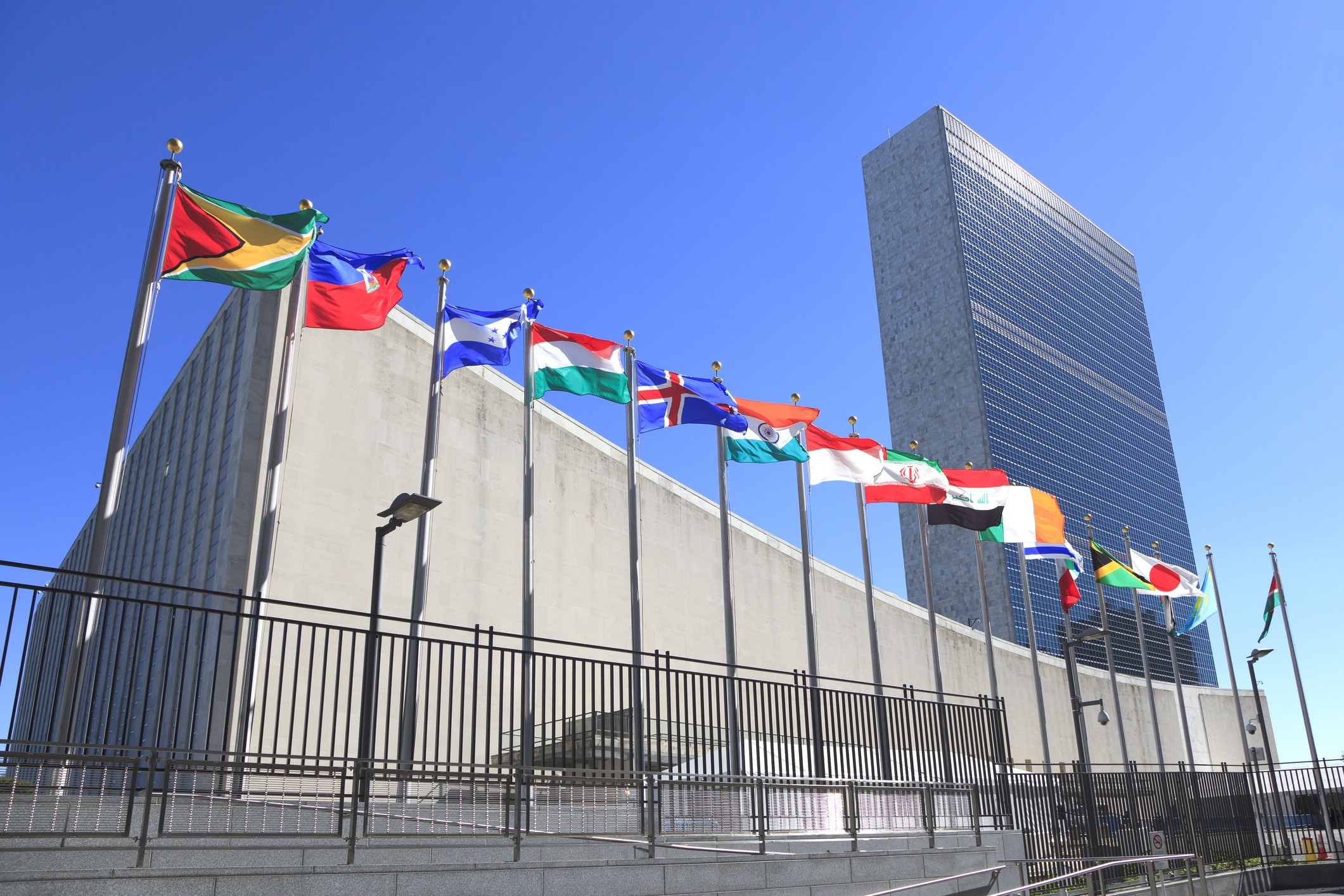Reflections on the United Nations High-Level Meeting on Antimicrobial Resistance
Posted on November 18, 2024 by Will Thompson
In September, the Microbiology Society attended the United Nations High-Level Meeting on Antimicrobial Resistance (UN HLM on AMR). The meeting was a critical opportunity for world leaders to come together and commit to clear, new targets and practical steps to tackle AMR. Here, we highlight how the HLM represented a major step forward in knocking out AMR, but still fell short in some key areas.
In September, the Microbiology Society attended the United Nations High-Level Meeting on Antimicrobial Resistance (UN HLM on AMR). Find out more about the experience of council members Dr. Tina Joshi (University of Plymouth) and Dr. Catrin Moore (St George’s, University of London) in their editorial in Journal of Medical Microbiology here.
Convened by the President of the General Assembly, the meeting included representatives from UN Member States, the Quadripartite organisations (Food and Agriculture Organization of the United Nations, United Nations Environment Programme, World Health Organization, and World Organisation for Animal Health), the Global Leaders Group on Antimicrobial Resistance, government officials, industry representatives, and civil society [1]. The meeting was a critical opportunity for world leaders to come together and commit to clear, new targets and practical steps to tackle AMR [2].
The UN HLM on AMR represented a major step forward in establishing practical steps to addressing AMR. The various commitments are outlined in the Political Declaration, a formal document officially adopted by UN Member States during the HLM [1].
Highlights include:
- Setting up an independent panel to provide evidence on AMR: The Quadripartite organisations have been invited to setup an independent panel by 2025, with a goal to provide evidence that supports Member States in tackling AMR. We would expect this panel to be modelled on the success of the Intergovernmental Panel on Climate Change (IPCC), the UN body for assessing the science related to climate change. Lessons from the IPCC “highlight the importance of legitimacy, independence, timely reporting, and cost-efficiency” [3].
- The introduction of targets to tackle AMR:
- Reducing global deaths associated with bacterial AMR by 10% by 2030.
- Supporting national action plans on AMR with a funding target of US$ 100 million, aiming for at least 60% of countries to have funded plans by 2030.
- Increasing the global use of ' WHO Access group antibiotics' to at least 70% by 2030.
- Achieving basic Water, Sanitation and Hygiene (WASH) in all healthcare facilities and meeting WHO’s minimum requirements for Infection Prevention and Control (IPC) in 90% of countries by 2030.
While the introduction of targets is promising, some of the commitments lack ambition. For example, the funding target of US$ 100 million by 2030 to support national action plans on AMR, pales in comparison to the funding of other urgent global challenges, such as the global HIV response (US$ 8.2 billion in 2023) and action against climate change (US$ 100 billion a year in 2024) [4]. This is despite AMR being attributed to significantly more deaths than HIV and calling for similar large-scale practice and system changes as action against climate change [4].
In addition, the Political Declaration establishes few mechanisms to hold stakeholders accountable and ensure they meet targets. Holding policymakers to account is crucial as we work towards tackling AMR collaboratively and across sectors [5]. Therefore, the lack of accountability mechanisms built into commitments is concerning, especially given the scope and urgency of the AMR crisis.
Conclusion
The Microbiology Society celebrates the level of international exposure and attention AMR has received as a result of the UN HLM and welcome the progress made in terms of establishing practical steps to tackling AMR. Moving forward, the Society urges Member States to build on the momentum generated by UN HLM and strengthen their commitments to tackling AMR. The UN HLM has demonstrated political will to tackle AMR, but real action is essential to ensure progress.
References
- United Nations. Political Declaration of the High-level Meeting on Antimicrobial Resistance; 2024. https://www.un.org/pga/wp-content/uploads/sites/108/2024/09/FINAL-Text-AMR-to-PGA.pdf [accessed 22 October 2024]
- Quadripartite Joint Secretariat On AMR. UNGA High-Level Meeting on AMR; 2024. https://www.qjsamr.org/about-us/unga-high-level-meeting-on-amr [accessed 22 October 2024]
- Ruckert A, Bishop J, JP Poirier M. Designing an Independent Panel on Evidence for Action against AMR; 2024. https://www.globalstrategylab.org/wp-content/uploads/2024/06/GSLPolicyBrief_IPEA-2024-06-13.pdf [accessed 22 October 2024]
- ReAct. Latest version of UN High-Level Meeting Political Declaration disappoints in crucial places; 2024. https://www.reactgroup.org/news-and-views/news-and-opinions/year-2024/latest-version-of-un-high-level-meeting-political-declaration-disappoints-in-crucial-places/ [accessed 22 October 2024]
- Microbiology Society. Addressing the crisis: a roadmap for tackling Antimicrobial Resistance (AMR); 2024. https://microbiologysociety.org/asset/1001C46F%2D816B%2D453A%2DBB4638E8D4C82659/?_gl=1*1ueguhv*_up*MQ..*_ga*MjgxNzI2ODExLjE3MzAyMDA3MzE.*_ga_KJR7LS80P1*MTczMDIwMDczMC4xLjEuMTczMDIwMDczNS4wLjAuMA.. [accessed 22 October 2024]

